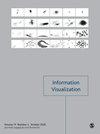关于使用可视化解释机器学习模型的调查综述
IF 1.8
4区 计算机科学
Q3 COMPUTER SCIENCE, SOFTWARE ENGINEERING
引用次数: 91
摘要
近年来,机器学习的研究变得非常流行,提出了许多类型的模型来理解和预测来自不同领域的数据的模式和趋势。随着这些模型变得越来越复杂,用户也越来越难评估和信任他们的结果,因为他们的内部操作大多隐藏在黑匣子中。机器学习模型的解释目前是信息可视化社区的热门话题,研究结果表明,机器学习模型可以带来更好的预测,并提高结果的可信度。正因为如此,最近发表了多篇(广泛的)调查文章,试图总结关于该主题发表的大量原创研究论文。但对于这些调查涵盖了什么,它们之间的重叠是什么,它们处理的是哪种类型的机器学习模型,或者读者在每个调查中会发现什么样的场景,并不总是有一个明确的定义。在这篇文章中,我们对手动收集的调查论文进行了荟萃分析(即“调查调查”),这些论文涉及机器学习模型的视觉解释,包括所选调查中讨论的论文。我们这篇文章的目的是通过获取、编目和展示该领域的最新技术和研究机会的基本知识,作为对该调查生态系统的详细总结和指导。我们的研究结果证实了在过去几年中,用可视化来解释机器学习的趋势越来越大,可视化可以帮助深度学习模型的在线训练过程,并增强对机器学习的信任。然而,这种援助究竟应该如何进行的问题仍然被视为可视化社区的一个公开挑战。本文章由计算机程序翻译,如有差异,请以英文原文为准。
A survey of surveys on the use of visualization for interpreting machine learning models
Research in machine learning has become very popular in recent years, with many types of models proposed to comprehend and predict patterns and trends in data originating from different domains. As these models get more and more complex, it also becomes harder for users to assess and trust their results, since their internal operations are mostly hidden in black boxes. The interpretation of machine learning models is currently a hot topic in the information visualization community, with results showing that insights from machine learning models can lead to better predictions and improve the trustworthiness of the results. Due to this, multiple (and extensive) survey articles have been published recently trying to summarize the high number of original research papers published on the topic. But there is not always a clear definition of what these surveys cover, what is the overlap between them, which types of machine learning models they deal with, or what exactly is the scenario that the readers will find in each of them. In this article, we present a meta-analysis (i.e. a “survey of surveys”) of manually collected survey papers that refer to the visual interpretation of machine learning models, including the papers discussed in the selected surveys. The aim of our article is to serve both as a detailed summary and as a guide through this survey ecosystem by acquiring, cataloging, and presenting fundamental knowledge of the state of the art and research opportunities in the area. Our results confirm the increasing trend of interpreting machine learning with visualizations in the past years, and that visualization can assist in, for example, online training processes of deep learning models and enhancing trust into machine learning. However, the question of exactly how this assistance should take place is still considered as an open challenge of the visualization community.
求助全文
通过发布文献求助,成功后即可免费获取论文全文。
去求助
来源期刊

Information Visualization
COMPUTER SCIENCE, SOFTWARE ENGINEERING-
CiteScore
5.40
自引率
0.00%
发文量
16
审稿时长
>12 weeks
期刊介绍:
Information Visualization is essential reading for researchers and practitioners of information visualization and is of interest to computer scientists and data analysts working on related specialisms. This journal is an international, peer-reviewed journal publishing articles on fundamental research and applications of information visualization. The journal acts as a dedicated forum for the theories, methodologies, techniques and evaluations of information visualization and its applications.
The journal is a core vehicle for developing a generic research agenda for the field by identifying and developing the unique and significant aspects of information visualization. Emphasis is placed on interdisciplinary material and on the close connection between theory and practice.
This journal is a member of the Committee on Publication Ethics (COPE).
 求助内容:
求助内容: 应助结果提醒方式:
应助结果提醒方式:


